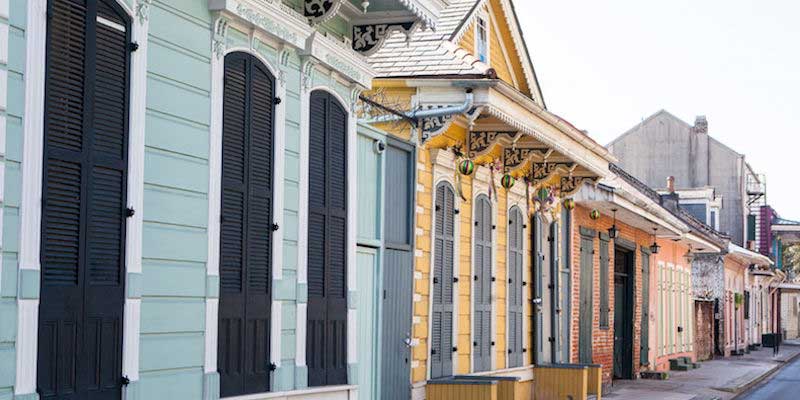Spotting a transitional neighborhood requires you to research, watch, and navigate the potential living area. Are there new stores popping up? What’s the crime rate? How close is it to local hotspots? Learn some telltale signs of an up-and-coming New Orleans neighborhood.
6 Telltale Signs of an Up-and-Coming Neighborhood
The most promising neighborhoods on the rise may not be the most hopping or the easiest to navigate — yet. Most cities have transitional neighborhoods that are destined and primed for remodeling and repurposing, but how do you find an up-and-coming neighborhood in New Orleans that’s poised for growth yet still affordable? And how do you ensure the neighborhood is not just affordable but will grow and improve? These signs will help you determine whether the area is on the rise.
1. Accessibility
Transportation convenience is a crucial ingredient in the creation of the next “it” neighborhood. Within the city limits, it means proximity to the established transit routes such as public transportation. Outside of the city, it’s represented by the easy access to highways, turnpikes, and other major thoroughfares. One local example would be the recent expansion of the N. Rampart/St. Claude streetcar line, which has connected the up-and-coming area of St. Claude Avenue to the French Quarter.
2. Trendy Adjacent Neighborhoods
The areas bordering popular neighborhoods are more likely to grow and see their property values go up. Sometimes it’s just a matter of being across the street as location plays a crucial role in the neighborhood’s fate. For example, with all the business property development, including the medical corridor, the condos, and the hip new hotel The Drifter, Tulane Avenue is benefiting from a vigorous revitalization due to its proximity to the French Quarter and the thriving residential parts of Mid-City.
3. Decreasing DOM
Days on the Market, or DOM, is a good indicator of a given neighborhood’s housing market. To determine whether the measurement of how long a property has been up for sale is decreasing look at the sale listings in the area. Under two weeks is a great sign, whereas anything longer than four months is not. Experts say the decline can start occurring before the home prices go up, so monitoring DOM can help you make your move while the area is still affordable.
4. Dwindling Crime Rate
It’s a no-brainer: If the crime level in the area seems to be decreasing, the neighborhood will be more open to a diverse spectrum of buyers, including those who value safety first and foremost, like families with children. You can check the local crime rate in New Orleans by using government data by district, by checking local news outlets, or by creating a crime alert for the area of interest.
5. Incoming Retailers
A Starbucks popping up around the corner has become a cliché sign of gentrification but can still offer value to prospective homebuyers in New Orleans. If the neighborhood is good enough for Whole Foods or a trendy boutique, it may be good enough for you. Larger retailers spend serious money on market research, so there’s always a good reason the area is getting a Trader Joe’s or an IKEA. It’s not just chains and the big-box giants though: If you see a cool new cocktail bar, micro-brewery, or forward-thinking small retail outpost rolling in, it’s very likely more will follow. Signs of construction are also a reliable way to spot a neighborhood on the cusp of becoming hot. Seeing a lot of remodeling or repairing can help you judge the trajectory of your potential new neighborhood.
6. Mixed-Use Value
Pretty much every neighborhood is historically significant in New Orleans, given that the city has been around for three centuries. However, it’s usually the neighborhoods that have buildings with the potential for commercial and residential repurposing that get a lot of attention. Local examples include the explosive growth of the CBD and the Warehouse District and the condo and loft apartment development in Bywater and Mid-City.
New Orleans doesn’t necessarily follow the rules of up-and-coming neighborhoods that other large metro areas subscribe to, so if you’re looking to invest in or move to an up-and-coming NOLA neighborhood, contact a Satsuma Realtor. We’ll help you find an affordable area with the greatest amount of potential.
